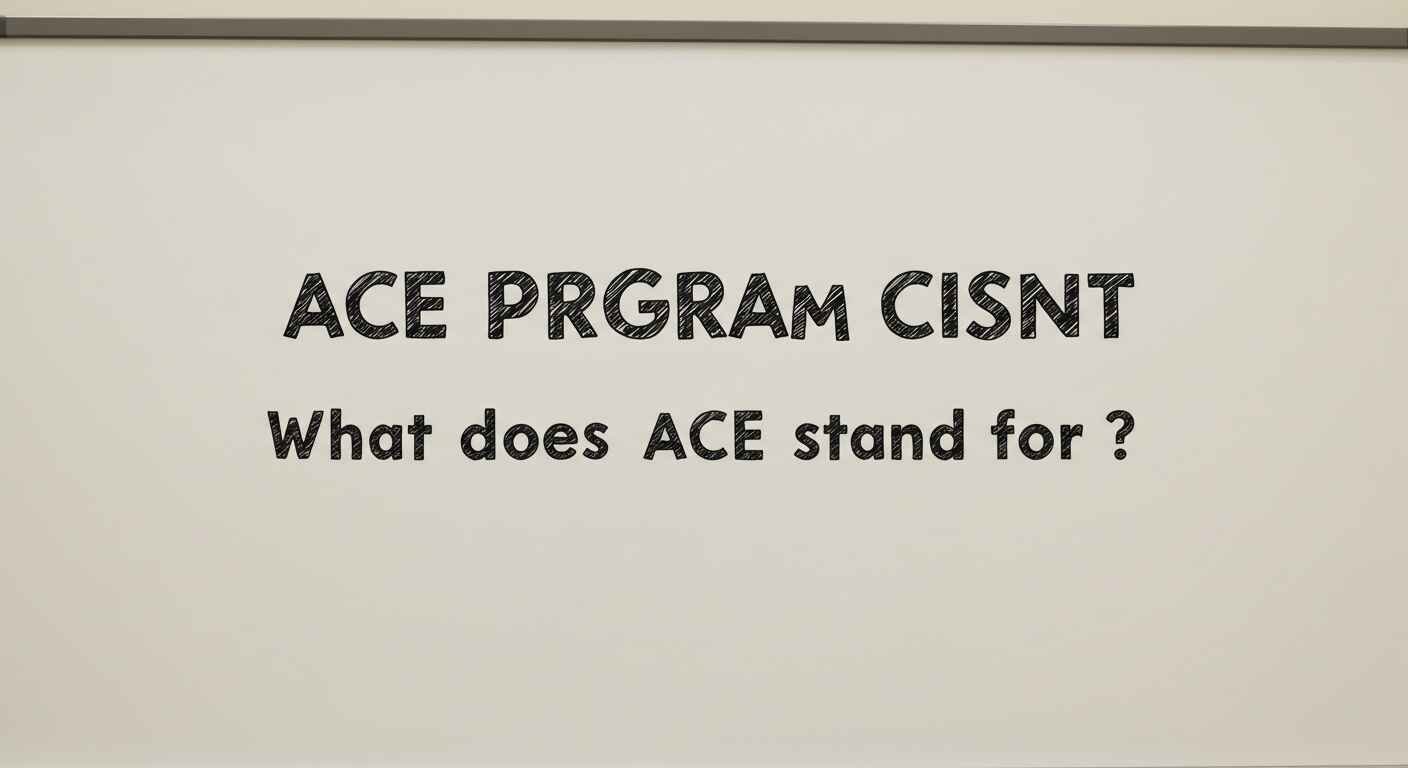If you’ve heard about the ACE Program at CISNT, you might be wondering—what does ACE stand for, and more importantly, why is it important?
The ACE Program, short for Afterschool Centers on Education, is a valuable initiative that provides academic enrichment, life skills development, and family support services beyond the school day. Specifically, when referring to CISNT—which stands for Communities In Schools of North Texas—the ACE Program becomes even more impactful due to its integration with community-driven education efforts.
In this article, we’ll break down everything you need to know about the ACE Program at CISNT, including what ACE stands for, what the program offers, who it serves, and why it plays a vital role in helping students succeed both academically and socially.
What Does ACE Stand For?
Let’s start with the basics:
ACE stands for Afterschool Centers on Education.
This is a state-funded program through the Texas Education Agency (TEA) designed to:
- Improve student academic performance
- Provide enrichment opportunities outside regular school hours
- Promote parental involvement
- Reduce dropout rates
The ACE Program operates in collaboration with local school districts and nonprofit partners like Communities In Schools of North Texas (CISNT). At CISNT, the ACE Program is tailored to meet the unique needs of students across multiple campuses in the North Texas area.
Who Is CISNT?
Before diving deeper into the ACE Program, it helps to understand the organization delivering it.
Communities In Schools of North Texas (CISNT) is a nonprofit organization committed to surrounding students with a community of support to help them stay in school and achieve in life. Their mission aligns perfectly with the ACE initiative, making them an ideal implementer of the program.
By leveraging their network of staff, counselors, volunteers, and local partners, CISNT helps address both the academic and non-academic barriers students face—from struggling with math homework to lacking stable housing.
The Purpose of the ACE Program
So, why does the ACE Program exist?
Here are the main goals:
- Enhance academic achievement through tutoring and homework help
- Expose students to enrichment activities like STEM, art, music, and sports
- Provide a safe environment during critical after-school hours
- Encourage family engagement through workshops and events
- Strengthen social-emotional skills like communication, responsibility, and resilience
In a nutshell, the ACE Program is not just about academics. It’s about helping students thrive as whole individuals.
How the ACE Program Works at CISNT
At CISNT, the ACE Program is implemented across various elementary, middle, and high schools. Here’s how it typically works:
✏️ Academic Support
Certified teachers and trained tutors provide homework assistance, study sessions, and subject-specific tutoring in areas like math, reading, and science.
🧪 Enrichment Activities
Students get to explore interests beyond the classroom—robotics, drama, visual arts, sports, cooking classes, and even coding.
💬 Social-Emotional Learning
Workshops, mentorship, and team-building activities help students develop confidence, leadership, and interpersonal skills.
👨👩👧👦 Family Engagement
Parent nights, literacy programs, and community resources help bring families into the education process, strengthening student outcomes.
🛡️ Safe Supervision
Programs run before and after school hours, keeping students engaged and supervised during times when they might otherwise be alone or unsupervised.
Real Impact: Why the ACE Program Matters
The ACE Program isn’t just a nice after-school activity—it has proven results. Let’s look at some ways it’s making a difference:
1. Improved Academic Performance
Students who attend ACE programs regularly show better grades, higher test scores, and are more likely to pass standardized tests.
2. Reduced Dropout Rates
By providing a supportive environment and boosting engagement, ACE programs help keep at-risk students in school.
3. Positive Behavior Changes
Students involved in ACE demonstrate improved behavior, better attendance, and fewer disciplinary issues.
4. Increased Parental Involvement
Through regular events and communication, parents become more involved in their children’s education, which correlates with higher success rates.
Who Can Join the ACE Program at CISNT?
The ACE Program is free of charge for eligible students, and space is often limited depending on funding and capacity. It typically targets students who:
- Attend Title I schools
- Need academic support
- Lack access to enrichment activities
- Are at risk of dropping out
Parents can usually sign their children up during school registration or by contacting their school’s ACE site coordinator.
A Day in the Life of an ACE Student
Let’s paint a picture of what a typical day in the ACE Program looks like at CISNT:
- 3:30 PM – Snack and Chill
- Students get a healthy snack and a short break after school.
- 4:00 PM – Homework Help and Tutoring
- Dedicated time to tackle assignments with support from tutors and teachers.
- 4:45 PM – Enrichment Activity
- Whether it’s LEGO robotics, painting, dance, or learning a new instrument—students dive into fun, creative learning.
- 5:30 PM – SEL Session or Group Game
- Activities focused on teamwork, leadership, and emotional skills.
- 6:00 PM – Parent Pickup
- Students head home with new knowledge, new friendships, and a boost of confidence.
ACE Program Success Stories
Many students and families who participate in the CISNT ACE Program have inspiring stories of growth and achievement.
“My son used to struggle with reading, but thanks to the ACE Program, he now loves books and even reads to his younger sister,” said one parent.
“Before ACE, I didn’t feel like I belonged. Now, I’m part of a robotics team, and I’m thinking about engineering as a career,” shared a high school student.
How Is the ACE Program Funded?
The ACE Program is primarily funded by 21st Century Community Learning Centers grants, administered by the Texas Education Agency (TEA). These funds are awarded to schools and organizations like CISNT to operate programs in high-need areas.
Because the funding is grant-based, support from local donors and businesses can also help expand or sustain programs long-term.
Why Parents and Communities Should Support ACE
Whether you’re a parent, educator, or community leader, supporting programs like ACE benefits everyone. Here’s why:
- Safe kids = safer communities
- Engaged students = higher graduation rates
- Educated youth = stronger workforce tomorrow
Investing in after-school education is investing in the future of North Texas.
How to Get Involved
There are many ways to support the ACE Program at CISNT:
- Volunteer your time as a tutor or enrichment coach
- Donate to CISNT to help sustain and grow the program
- Advocate for continued funding of afterschool programs
- Participate as a parent or caregiver in events and workshops
Final Thoughts
So now you know—ACE stands for Afterschool Centers on Education, and it’s much more than just a place for kids to hang out after school.
At CISNT, the ACE Program transforms lives by helping students succeed in school, build confidence, and dream big. It bridges the gap between classroom learning and real-world skills, offering opportunities many students wouldn’t have otherwise.
Whether you’re a parent looking for support, a student seeking inspiration, or a community member wanting to make a difference—the ACE Program is a shining example of what happens when education, community, and care come together.













